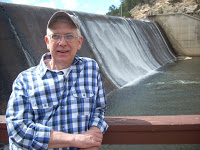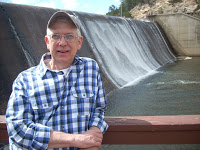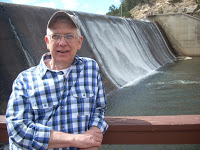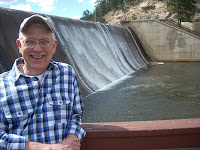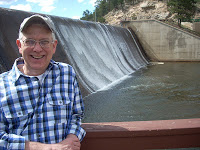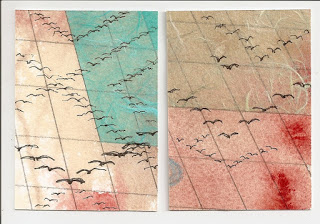When I heard the sound of the rattle I froze. Here alone with no one knowing I had even gone anywhere. My day off. No one at home. No cell phones. Late March afternoon on the West Mesa across the river from Albuquerque. I’d come here alone to look at the petroglyphs so I could look and look without anyone becoming bored or impatient. I’d started up a trail I’d never walked following its diagonal slope across the steep south exposure when I realized I really wanted to be off the path searching out there where no one was likely to have looked. And now I heard this surprising sound. It was too cold to worry over snakes, yet the distinctive, bone-chilling sound was from a rattlesnake. Where was it? I searched the large rock I was standing on. I studied the sage brush, rubber rabbit bushes, snake weed, and yuccas in every direction. I saw nothing, but recalled all too clearly my Scout training that had taught me these places make snakes hard to see. I wondered just how close the snake might be hoping it had moved away. I moved slightly. No sound. I waved my arms. The rattle resumed, and then stopped when I stopped. I moved my arms periodically hoping to discover just where the rattler had coiled. No such luck. I supposed my shadow had tipped off the snake in the first place. Recalling what I’d learned about snakes I realized it probably didn’t know where I was, just aware that I’d caused a shadow. Even though I couldn’t see a snake I knew not to step forward.
I’d go back the way I had come, but since I had been climbing slightly upward I’d have to go down, not a good thing in this rugged terrain. I knew a man who once stepped over a rock right onto a rattler. He got bit. Not me. I figured if I walked up hill to rejoin the well-travelled trail, (you know zag after my zig) I could then continue. I would walk uphill toward my shadow hoping not to see a snake, yet hoping to see one before it saw me. Did I want to be that close? No. Gingerly—no word for an outdoors adventurer but acutely accurate for this city slicker’s picking his way through the wilderness—I made my way ridiculously waving my arms like a windmill. Within a few yards I was startled to see the tail of a snake disappear into what I surmised was its den in the hillside. The snake had apparently been sunning on his front porch before being rudely interrupted by this quaking interloper. I was then super alert to my surroundings, and on my way up to the safety of the trail, I spotted two more disappearing snake tails. I must have been in a suburban Rattlesnake village.
Back on the trodden path I continued to the top of the mesa still alert to everything I could see to be afraid of. At the top there was mostly shade on the ground, no rattlesnake chaise lounges that I could see. I continued to a wide gully on the north side and reasoned I could safely descend where there had been no sunshine for quite a long time and probably no front porches at all. With relief but still quite a bit of anxiety running through my body, I picked a place to descend and had walked about two thirds of the way to the bottom when a loud crackling sent me almost into a panic. I saw with relief that I had frightened a rabbit. Still, several lower-body organs seemed caught in my throat. I laughed at myself the rest of the way down the hill where I was pleased to view some petroglyphs along the base of the escarpment even ones that had been viewed by thousands of other people. I really just needed to look at them, not discover new ones. Several were beautiful, and I was pleased none of them pictured rattlesnakes.
© 12 June 2017
About the Author
Phillip Hoyle lives in Denver and spends his time writing, painting, and socializing. In general he keeps busy with groups of writers and artists. Following thirty-two years in church work and fifteen in a therapeutic massage practice, he now focuses on creating beauty. He volunteers at The Center leading the SAGE program “Telling Your Story.”
He also blogs at artandmorebyphilhoyle.blogspot.com
